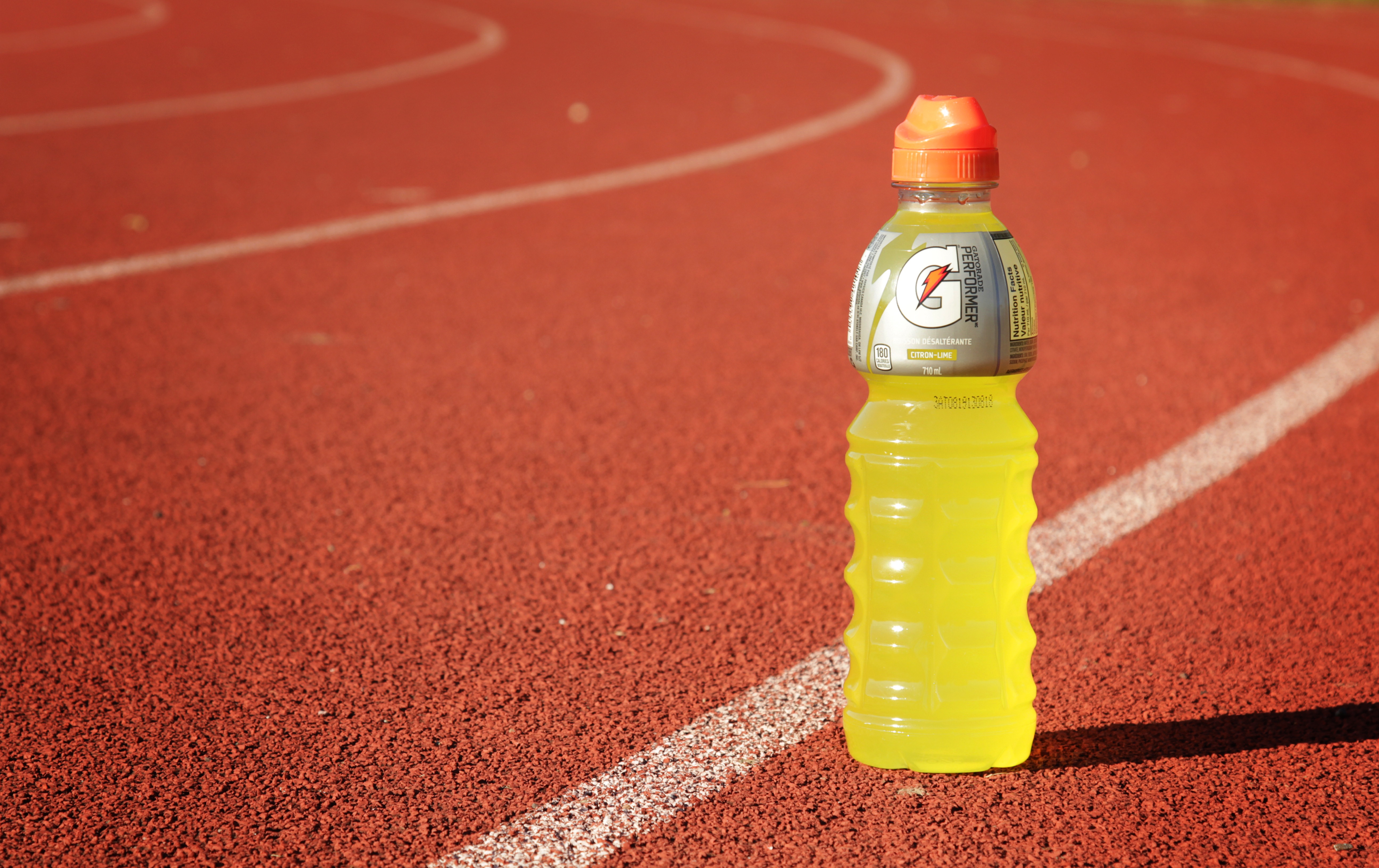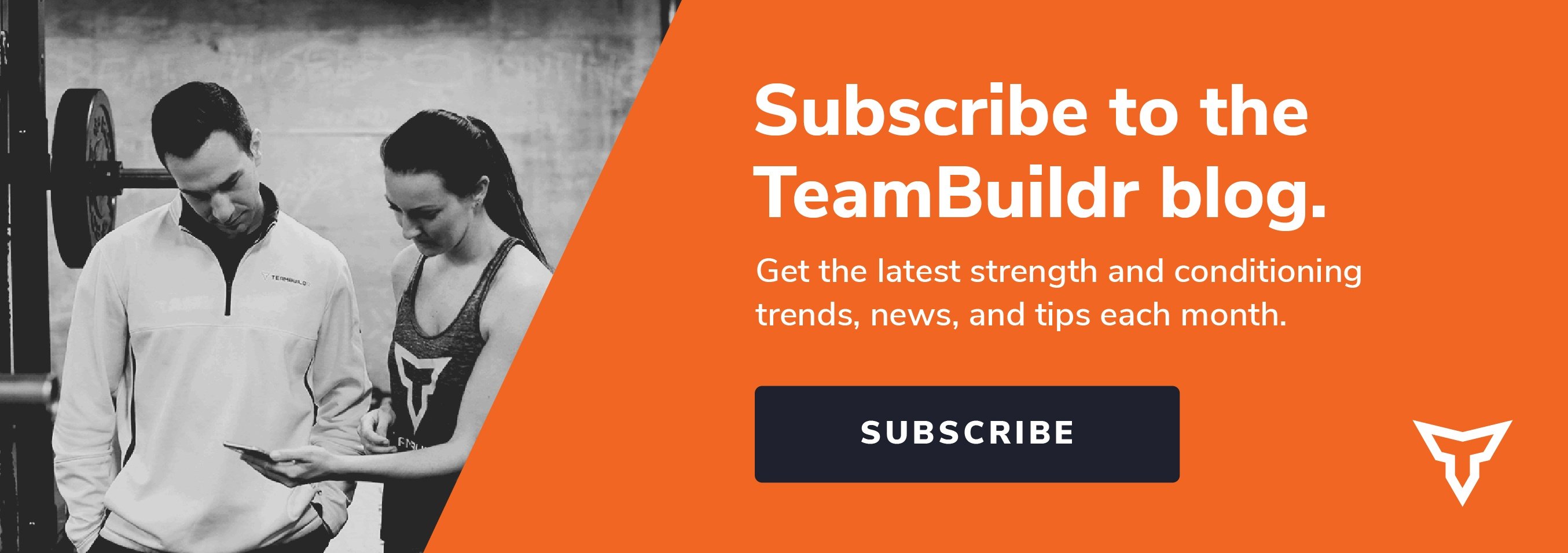Simple Supplementation Guide For the High School Athlete (Part 1)
Have you ever noticed how social media brings out the “best and brightest” minds on conversational topics?
For example, I'm in a group on Facebook specifically dedicated to high school strength coaches and the other day someone posed the question:
Q: "Should I provide creatine monohydrate for my high school athletes?"
The responses poured in and the thread steadily grew with each passing minute. Here are a few of my personal favorites:
A: "Players can get all of their needs met from chocolate milk and squats."
A: "This is a horrendous mistake; high school athletes don't need supplements."
A: “Good OL’ fashion red meat and nutrition should get them their needs in high school. Just not worth the conversation if they aren’t getting their daily needs in the first place.”
A: “Chocolate milk would be a better and more cost-effective option.”
For starters, there’s no creatine in chocolate milk. I hate to burst your dairy bubble but that’s not the point of creatine anyway.
Now, you and I both know that supplements aren't going to take anyone from a lanky 5'10"/130lbs high school recruit to a stacked D1 superstar overnight.
But, there are specific compounds which can play a vital role in performance (e.g. creatine) and health (e.g. vitamin D, magnesium, etc), which adults are deficient in. So, you can bet teenagers aren't getting enough, given they're crushing McDonald's, Yoo-hoo's, and Little Debbie cakes on the daily.
I'm not one to push supplements and I think they can often be overused or over-relied on; but, it's clear that the current educational background on supplementation and nutrition for many coaches in the high school strength and conditioning sector is poor. As such, I hope this article will bring clarity on the fundamentals of the topic and provide practical recommendations for supplements for high school athletes.
Whey Protein
I can hear the comments now: “Athletes should get all of their basic needs met through food.” Sure, that’s all fine and dandy if you have parents who understand performance nutrition and the macronutrient needs of young, developing athletes. Out of 100 average high school athletes, how many parents would fit that classification? You can probably count them on both hands.
Whey is not meant to replace anything, it is simply supplemental to a sound nutritional program designed with the health and performance of the athlete in mind. Most youth athletes are on the go and as such they resort to simple, processed snacks instead of quality, nutritious options.
Enter whey protein and the “super shake” (a term coined by John Berardi and the smart folks at Precision Nutrition). Here’s a personal favorite of mine:
- 2 Frozen Bananas
- 2 Cups Chocolate Almond Milk
- 1.5 Scoops of Whey Isolate
- 2 Tbsp Cocoa Powder
- 2 Tbsp Hemp or Chia Seeds
- 1 Cup Frozen Spinach
- 2 Tbsp Natural Peanut or Almond Butter
Tons of healthy fats, complex and simple carbs, plenty of fiber, and a quality dose of protein. That’s what portable nutrition looks like for adults or high schoolers. Also, in case you were wondering, you’ll never taste the spinach so don’t worry about it.
Takeaway: Don’t be afraid to bolster your protein intake through high school a bit with liquid options. If you haven’t eaten before training, consider a shake with 25-30g of protein. Similarly, if you won’t be able to eat for a while after training, a simple shake (better yet a “super shake” as described above) plus 1-2 pieces of fruit makes for a great, portable post-workout option.
Creatine Monohydrate
Creatine does much more than just influence rephosphorylation of ATP. There is a bevy of research implicating improvements to cognition, sleep quality (via cerebral oxygenation), and potentially even post concussive conditions.[1,2,3,4]
I'm sure we’ve all heard how creatine "leads to dehydration and kidney issues" when in fact the opposite is true - creatine acts as an osmolyte and actually INCREASES intracellular hydration, which enhances hypertrophy via anabolic signaling (mTOR).[5]
There is a litany of research showing nothing but positive benefits (from both a performance and a health standpoint) for healthy individuals with normal functioning kidneys. Even at high(er) doses (15-20g/day), you won't find any health complications aside from potentially higher markers of serum creatinine which is merely a metabolite of creatine once it is broken down.[6,7,8]
Many suggest that creatine can be acquired through dietary sources and supplementation is not necessary but if we do some math, that would equate to roughly 2.2lbs of beef or 3.3lbs of chicken PER DAY to reach ~5g of creatine. For reference, many of the current studies on creatine recommend dosages as high as 20g/day for neuroprotective effects and cognition improvements. That would equate to roughly ~9lbs of beef or ~13lbs of chicken per day, good luck if you’re trying to avoid the supplementation route…
Takeaway: 5g/day. Creatine monohydrate is dirt cheap and extremely beneficial. Don’t believe everything you read or hear from others, think for yourself.
Vitamin D
In our current day and age, most individuals spend the vast majority of their day indoors in front of a screen or in a classroom. As such, we’re seeing more and more adults and children presenting with vitamin D deficiency. This becomes a major issue in both an acute and chronic sense as vitamin D plays a major role in immune function and regulatory T-cell activity.[13,14,15]
Most cells involved in immune function carry receptors for vitamin D. Thus, more sun exposure will subsequently improve immune function via endogenous vitamin D production. – Dr. Aristo Vojdani
Not only that, most forget that light exposure helps to establish circadian rhythms and influences a whole host of biochemical, metabolic, and neuroendocrine reactions.[10,11,12] Those who avoid natural light exposure by utilizing sunscreen and sunglasses constantly are preventing their skin from executing one of its most important functions.
Now, typically with vitamin D you might expect specific recommendations relative to bloodwork (>75nmol/L-250nmol/L if you want to get technical).[9] But, in the case of a high school athlete, you’re going to run into issues with sustainability and bloodwork.
When was the last time you heard of a high school athletes getting consistent blood work to monitor vitamin D levels? My point exactly. As such, it’s important that we examine and modulate lifestyle factors before we default to supplementation.
Takeaway: Seek out full spectrum sunlight as early in the day as possible (ideally first thing in the morning). Shoot for 30+ minutes of daily sun exposure without sunglasses.
The Best is Yet to Come…
Stay tuned for part 2 in which we’ll cover frequently asked questions such as:
- Are multivitamins necessary?
- Can I take caffeine in high school?
- Do BCAAs help with muscle growth and delayed onset muscle soreness (DOMS)?
- Is it safe for high schoolers to frequently use melatonin if they have trouble sleeping?
All this and more coming in Part 2 of the series. If you have specific questions you’d like to have covered, feel free to drop them in a comment below or reach out directly on Facebook @Michael Joseph Wines.
Subscribe to our blog
Subscribe to receive the latest blog posts to your inbox every week.
Related posts

Nutritional Science Made Simple for High School & College Athletes

The 4 Non-Secret Pillars of Athletic Performance

